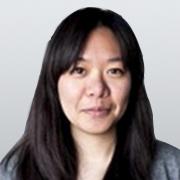About 140 dancers from three continents came to New York for a dance competition from Sept. 7 to Sept. 10, several traveling across the globe in order to witness a once nearly lost dance skill being used by the dancers who pioneered its revival.
The 2023 NTD International Classical Chinese Dance Competition is now in its 10th run, holding fast to its mission of promoting pure beauty, pure kindness, and authenticity.
Classical Chinese dance is a systematic, comprehensive dance form with roots thousands of years deep, and the New York-based Shen Yun Performing Arts has brought the once little-known art form in its authentic form to global recognition.
Tsai Yutsu from Taiwan has been dancing for six years and wanted to test herself by applying to an international competition. Plus, she said, she wanted to observe other contestants, “particularly those using those ancient methods!”
“I really wanted to see it, and see how they do it,” she said with a laugh. She performed on Sept. 7 in the junior division.
“They’re so stable on stage, and their movements are long. They pay a lot of attention to breathing, I think, because everything flows, and there’s nothing broken in or between the movements,” Yutsu observed. “They pay a lot of attention to detail, and every movement is carried through to the end. From the ends of their tops to the tips of their fingers, all the movements look really beautiful.”
From what she could see, the starting point of the dancers’ movements are different when they use “shen dai shou” and “kua dai tui.” They don’t emphasize the different starting points, but instead it’s “a very internal thing,” Yutsu explained. They way they move is different, from the inside out, and the Shen Yun dancers did it naturally, she said.
“I think maybe it has to do with your day-to-day experience, lifestyle, and you have to understand the ancient culture, how people carried themselves, and that’s how you can express it,” she said.
She paid close attention to the contestants who were from Shen Yun, and she said anyone would do the same.
“Frankly, Shen Yun is everyone’s goal. We all aspire to dance at that level,” she said. “Being here, I can see the other dancers, and wow they are really impressive.”
She had seen videos before, and said it couldn’t compare; in person, the expressive effect was undeniable.
“The way they carry themselves is completely different—I think on screen, you can’t really get a feel for that. You can see the movements clearly, but you can’t really feel it the same way. In person, it’s like wow!”
Yutsu said that as a classical Chinese dancer, she’s learned quite a bit more about ancient history and traditional Chinese culture. It’s very much a culture that values being considerate of others, she said, and the dance shows it too, with its soft curves and rounded movements.
“Being here, promoting traditional culture together with Shen Yun dancers, it’s really something,” she said.
Liu Yunhsi from Taiwan said Shen Yun had been her inspiration as well. The most important reason for participating was to observe the use of their dance method, she said, but they inspired the piece she chose to perform at the competition as well.
In 2022, Shen Yun’s program included a dance that told the story of “Lady Yang,” who was known as one of the Four Great Beauties of ancient China.
“I thought Yang Yuhuan’s legacy was a negative one,” Yunhsi said; she was tied to a rebellion and ruin, and depicted in some interpretations as a bad person. “But after seeing the Shen Yun performance, it wasn’t like that. She wasn’t a bad person, and her story was a love story.”
“I wanted to put in my effort to try to portray that story,” she said. It was a difficult task, she shared, because at first she found little in common with a lady who once held the highest position in an imperial palace. The ancient Chinese could have been said to have a generally introverted nature, and classical Chinese dance requires one to embody the character portrayed, with their inner feelings driving every movement.
“You have to, from the inside out, match the character,” she said. “I had to be more detail-oriented, in particular with my portrayal of femininity, the femininity of antiquity.”
Even from just the first day of the competition, Yunhsi felt she had deepened her understanding of traditional Chinese culture, which is said to be divinely inspired.
“It’s about what is upright,” she said. And a portrayal of it “really comes from inside, from the heart.”
She said the Shen Yun artists, using the lost methods, amplified their communication of this traditional culture.
“It comes from your inner heart and comes out, reaching the farthest corners of the auditorium.”








